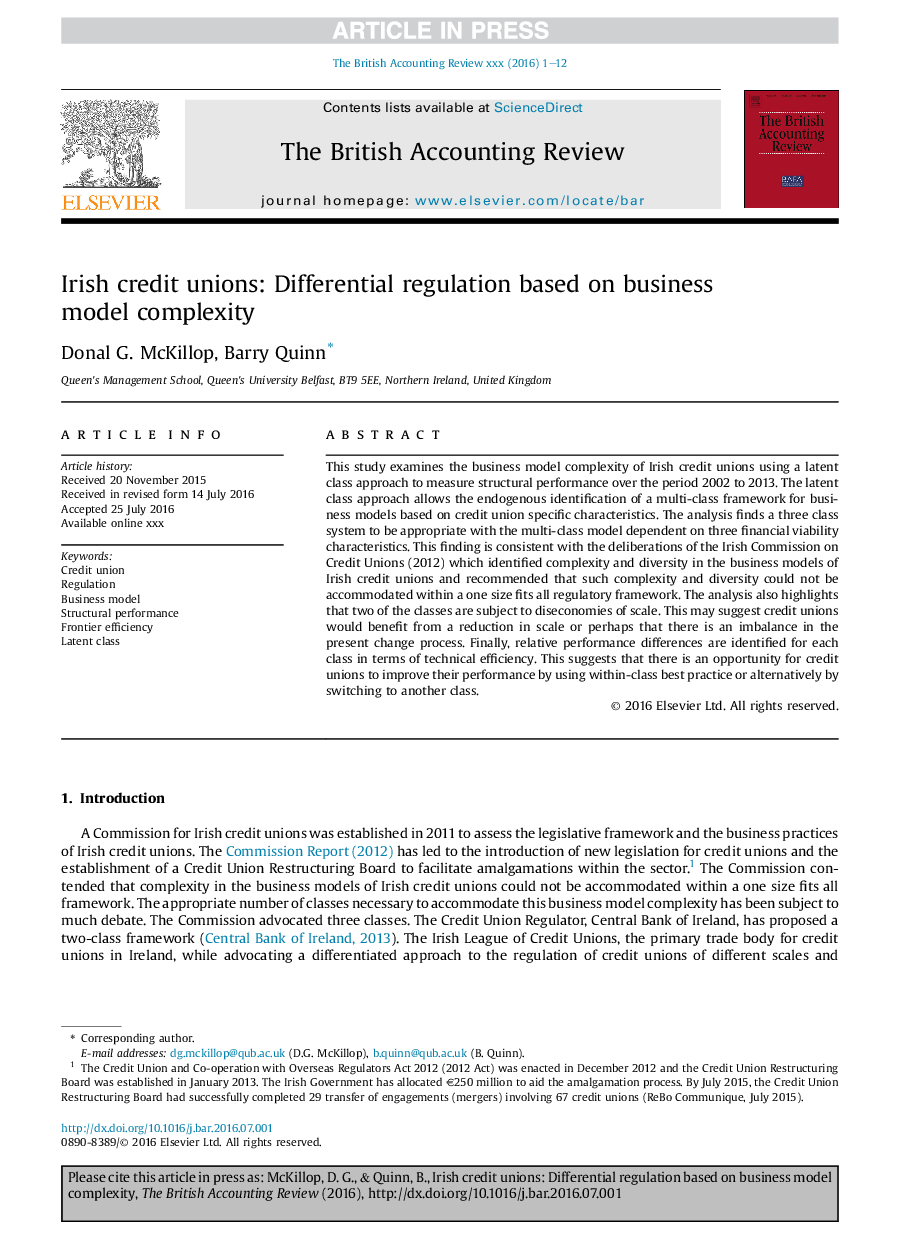| Article ID | Journal | Published Year | Pages | File Type |
|---|---|---|---|---|
| 5107541 | The British Accounting Review | 2017 | 12 Pages |
Abstract
This study examines the business model complexity of Irish credit unions using a latent class approach to measure structural performance over the period 2002 to 2013. The latent class approach allows the endogenous identification of a multi-class framework for business models based on credit union specific characteristics. The analysis finds a three class system to be appropriate with the multi-class model dependent on three financial viability characteristics. This finding is consistent with the deliberations of the Irish Commission on Credit Unions (2012) which identified complexity and diversity in the business models of Irish credit unions and recommended that such complexity and diversity could not be accommodated within a one size fits all regulatory framework. The analysis also highlights that two of the classes are subject to diseconomies of scale. This may suggest credit unions would benefit from a reduction in scale or perhaps that there is an imbalance in the present change process. Finally, relative performance differences are identified for each class in terms of technical efficiency. This suggests that there is an opportunity for credit unions to improve their performance by using within-class best practice or alternatively by switching to another class.
Related Topics
Social Sciences and Humanities
Business, Management and Accounting
Accounting
Authors
Donal G. McKillop, Barry Quinn,
